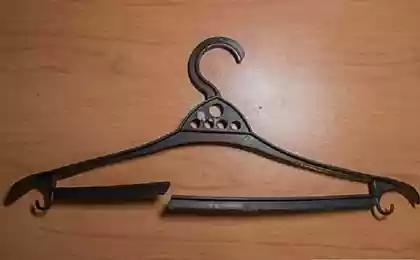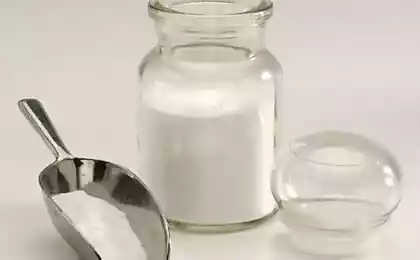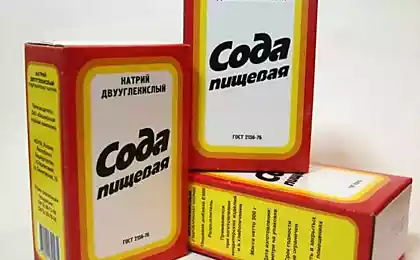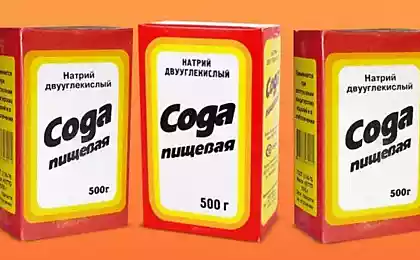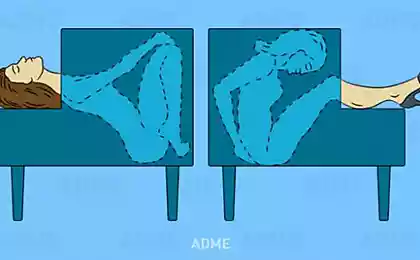532
How to glue anything —reveal the secret: baking soda + superglue!
Don't know how I ever lived when you didn't know about this way to repair plastic, but after he learned what a soda with superglue grabbed his head: how many things were thrown in vain!
If broken nekleymenoe soda with superglue comes to the rescue. The combination of these two cheap substances gives the strongest connection.
Small excerpt from Wikipedia:
"Liquid cyanoacrylate capable of anionic polymerization under the action of alkaline agents, including plain water. Solid base curing "superglue" in thin layers (in the range of 0.05—0.1 mm) causes the moisture adsorbed on the bonded surfaces or contained in the surface layers of the material (which, along with exposure to animals amines, is due to the excellent bonding fingers).
Harmful hardening of the mass of the adhesive when stored in a tightly closed container it is not caused by evaporation of the solvent, as in the case of nitrocellulose glue or PVA, and exposure to atmospheric moisture (as is typical, for example, silicone sealants);
in the manufacture of glue is sealed in a dried atmosphere. Also, according to the descriptions of the manufacturers, there is a mechanism of curing an alkaline agent associated with the neutralization of the acid stabilizer..."

So: soda+superglue
To work with cyanoacrylate in thick layers known Amateur method with sequential filling of the joint baking soda, wetted with superglue and toying in this case, not only the role of a filler, and an alkaline polymerizing agent. The mixture hardens almost instantly, forming allopathy filled with plastic, and in some cases can successfully replace epoxy composition, including reinforced fiberglass. As a filler you can use finely ground plaster or concrete, for example, dust obtained when drilling holes in such materials.
The reaction of cyanoacrylate with baking soda is a selection of temperature, with the result that, when applied to plastics and porous materials obtained solid connection with the formation of molecular bonds.

Moreover, the connection is so strong that most likely, the second time, the thing will break in a different place, and the superglue will hold.
This recipe has been tested me on a lot of things — it works every time, for example:
1.Take the broken thing
2.Easy fix moving parts
3.Tight joins and keep
4.Sprinkle the top with soda
5.Drench super glue
6.Similarly, on the other hand
7.It should be repeated several times, will be very durable: glue-soda-glue-soda. published
Source: informednews24.com/?p=8521
If broken nekleymenoe soda with superglue comes to the rescue. The combination of these two cheap substances gives the strongest connection.
Small excerpt from Wikipedia:
"Liquid cyanoacrylate capable of anionic polymerization under the action of alkaline agents, including plain water. Solid base curing "superglue" in thin layers (in the range of 0.05—0.1 mm) causes the moisture adsorbed on the bonded surfaces or contained in the surface layers of the material (which, along with exposure to animals amines, is due to the excellent bonding fingers).
Harmful hardening of the mass of the adhesive when stored in a tightly closed container it is not caused by evaporation of the solvent, as in the case of nitrocellulose glue or PVA, and exposure to atmospheric moisture (as is typical, for example, silicone sealants);
in the manufacture of glue is sealed in a dried atmosphere. Also, according to the descriptions of the manufacturers, there is a mechanism of curing an alkaline agent associated with the neutralization of the acid stabilizer..."

So: soda+superglue
To work with cyanoacrylate in thick layers known Amateur method with sequential filling of the joint baking soda, wetted with superglue and toying in this case, not only the role of a filler, and an alkaline polymerizing agent. The mixture hardens almost instantly, forming allopathy filled with plastic, and in some cases can successfully replace epoxy composition, including reinforced fiberglass. As a filler you can use finely ground plaster or concrete, for example, dust obtained when drilling holes in such materials.
The reaction of cyanoacrylate with baking soda is a selection of temperature, with the result that, when applied to plastics and porous materials obtained solid connection with the formation of molecular bonds.

Moreover, the connection is so strong that most likely, the second time, the thing will break in a different place, and the superglue will hold.
This recipe has been tested me on a lot of things — it works every time, for example:
- fixing broken headlight
- fitting radiator
- the installation of the mirrors (Yes, when the lugs break off the baking soda with superglue them securely attaches the back)
- bumper
- the levers 1 / 8th buggy
- mount table lamp
- the body of kettle
- the lens mount
- grille
- the leg of the chair on wheels! (a year has passed, and it withstands my weight is 87kg, the second leg has been cracked and repaired soda even thinks)
- the housing of the uninterruptible power supply unit
- bracket fallen monitor, etc.
1.Take the broken thing
2.Easy fix moving parts
3.Tight joins and keep
4.Sprinkle the top with soda
5.Drench super glue
6.Similarly, on the other hand
7.It should be repeated several times, will be very durable: glue-soda-glue-soda. published
Source: informednews24.com/?p=8521





